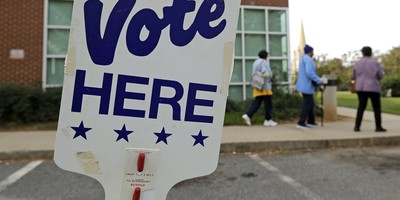Voters in California were in a unique position this election cycle as they have (tentatively) determined adults aged 21 years or older should not be able to legally purchase flavored tobacco and vapor products. This has been one of the most expensive ballot propositions this year with over $60.1 million in expenditures for “Yes on Proposition 31,” with nanny-state supporter Michael Bloomberg pumping in $58 million, or 95 percent of the campaign's funding. Just two days after the election, less than half of the votes are counted (46 percent), but those that have voted on the prohibitionist measure overwhelmingly (62.3 percent to 37.7 percent) agreed to join four other states that already ban flavored vapor products, as well as Massachusetts, in banning all flavored tobacco and vape products.
What is going on in California, and other states with flavor bans, is more indicative of a wider trend of misinformation and a hypocritical application of science towards certain causes that feel good, while denying the same science to loathed industries and persons. More pointedly, Americans and policymakers seem to understand the combustion engine is bad for the environment, yet do not understand what combustion does to the lungs of people who smoke.
The flavor ban comes months after regulators in California finalized a rule that requires “100 percent of new car sales in California to be zero-emission vehicles by 2035.”
The combustion engine has long been blamed for changes to the environment. And, according to the Environmental Protection Agency, electric vehicles (EVs) “typically have a smaller carbon footprint than gasoline cars, even when accounting for the electricity used for charging.” The EPA notes that EVs “have no tailpipe emissions” and that even when accounting for electricity emissions caused by charging EVs, “an EV is typically responsible for lower levels of greenhouse gases than an average new gasoline car.”
Like the ozone layer, the lungs of people who smoke combusted tobacco products are exposed to harmful chemicals brought on by the combustion itself. For cigarettes, it is the process of lighting the tobacco on fire which unleashes over 7000 chemicals that harm users.
Like the environmental effort, over the past few decades scientists and researchers have begun to understand the nuances of tobacco use, specifically the role of nicotine in keeping adults hooked to deadly cigarettes.
Recommended
In the 1970s, famed tobacco research Michael Russell noticed the role of nicotine outside of the harms associated with combustion, remarking that “people smoke for the nicotine, but die from the tar.” This essentially set off a harm reduction movement in tobacco. It wouldn’t be until the mid-2010s, when the modern e-cigarette revolutionized nicotine intake and that nicotine cravings could be satisfied by a less harmful alternative.
Despite tobacco control’s best intentions, pharmaceutical and therapeutic cessation services have failed to significantly reduce the number of adults who smoke in the United States. But, thankfully, consumer-driven tobacco harm reduction products such as e-cigarettes have been introduced to market and shaken up the tobacco landscape for the better. In fact, a 2021 Cochrane systematic review found e-cigarettes to be more effective than government-approved nicotine replacement therapy in helping adults quit smoking.
Nicotine and electricity/power for cars are quite similar, in that they deliver reduction in harm. Yet, Americans’ perceptions of either are quite disparate.
Americans embrace the role that alternatives to combustion engines play in advancing reducing emissions. An August 2022 survey from the Pew Research Center found a “broad majority of U.S. adults support providing incentives to increase the use of electric or hybrid vehicles,” and a July 2022 AAA consumer survey found one-fourth of Americans would likely purchase an EV as their next vehicle.
Yet, Americans are completely confused about the role of nicotine and the products that can help adults quit smoking by providing a safer alternative, much like an EV. A 2020 Rutgers-led study of doctors found 80 percent believed “nicotine … directly causes cancer.” This came two years after a 2018 study used national survey data and found that 53 percent of American adults believed “nicotine causes most of the cancer related to smoking.” An August 2022 Gallup poll found that nearly “three-quarters of U.S. adults … favor requiring tobacco companies to lower nicotine levels in cigarettes.”
Even more pernicious, in states where there are flavor bans, there are government-led programs to reduce carbon emissions to the environment. In fact, all four states with active flavor bans are participants in the Regional Greenhouse Gas Initiative (RGGI), a “cooperative effort … to cap and reduce power sector CO2 emissions.”
Interestingly, over the past three years, all RGGI states minus Virginia, have introduced legislation to ban the sale of flavored vapor products. Just this year, lawmakers in Connecticut and Maine failed to pass flavored e-cigarette bans.
Alarmingly, in states where there are restrictions to adult access to e-cigarettes, smoking rates among young adults are increasing, meaning that while young Americans are being exposed to less car combustion, they are being exposed to more cigarette combustion, despite advances in both automobiles and tobacco products.
It’s time for lawmakers to embrace the same science and innovation in tobacco in reducing the combustion related to cigarettes. Much like the combustion engine, tobacco has eliminated emissions through a wide variety of tobacco harm reduction products, which, like an EV, are significantly safer for consumers.
Lindsey Stroud is Director of the Taxpayers Protection Alliance’s Consumer Center.

























Join the conversation as a VIP Member